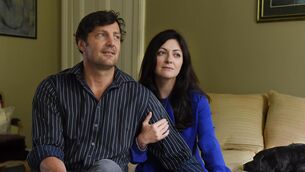NOWHERE ELSE TO GO

Mr Howard, public relations officer of the Irish Association of Social Care Workers, says: “He was the most difficult boy to work with in the centre, the one who had run away more than any other boy in the centre, a nightmare to work with. By anybody’s reckoning, here was a child who obviously wasn’t happy.
“The day that child left that centre, he told a member of staff, with tears streaming down his face, that the time he had been there was the happiest time in his life.”
















